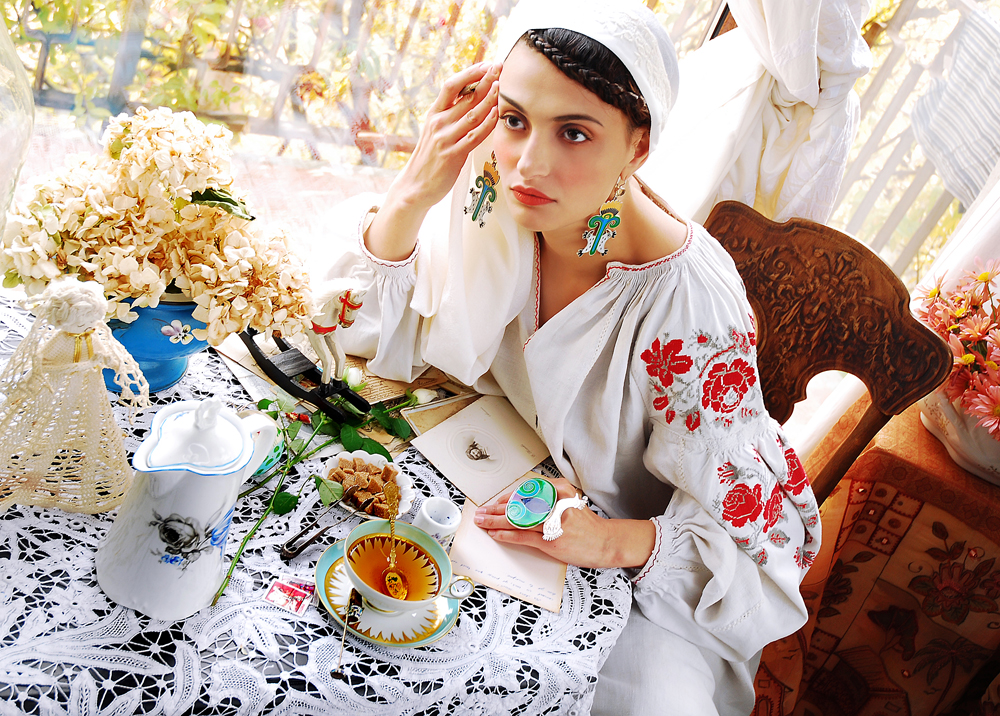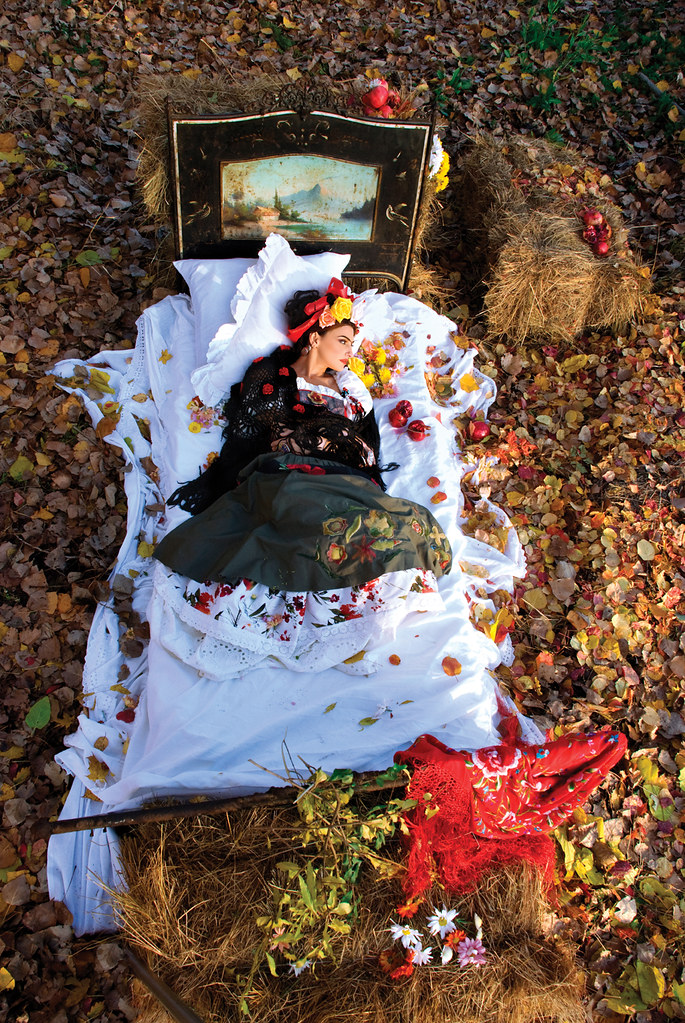
The original project «Letters» is perceived in Moscow as national and feminine project. Georgian artist Irma Sharikadze explores the character of the Mexican artist Frida Kahlo as a metaphor of artistic, feminine and national identity. The first picture by Frida was her self-portrait. She painted herself because she was «the subject she knew best», as she put it. The self-portrait with her twin sister is of particular importance to us. It depicts two beautiful young women in their best clothes and with naked hearts. Their hearts are bound by the same blood flow.
The «Letters» project by the Georgian artist reminds us of our joint cultural blood flow, of the art's ability to cross the borders and possess not only people, but also itself. Frida invented her twin sister who is now inventing Frida, being Irma Sharikadze's character. In the «Letters» project we see them both – Frida and Maritsa – the Georgian artist's alter ego, her own game with the artist's character, character strategies, history and languages of art.
The character tempts the artist to live another life, the twin sister makes it possible. Frida gave birth to Maritsa, Frida appears in the letters to Maritsa – the sisters become each other's symbolic mothers. («We'd better do it like that: be my mother and I'll be yours, if you have nothing against that, of course») This tender metaphor is pierced by sophisticated dialectics of image and referent, artist and character. It's a dialectics of maturing that appealed to Frida Kahlo and probably made the very essence of her art. Irma Sharikadze integrates her own artistic maturing into these two imaginary biographies of the sisters.
Moreover, twin sisters double the beauty. Vitality and strong beauty of the Georgian artist's characters send us back to the lines of Sergei Parajanov's force field. The viewer's attention slides along the impeccable image and stumbles at the handwritten text below the picture. Thus, the viewer's perception of the project is based not on the clichés of the glossy magazines that directly associate with spectacular photography, but on conceptual codes. Though, Irma has special relationship with these codes, just like Frida had with surrealist painting. ("They thought I was a Surrealist," she said, "… but I wasn't. I never painted dreams…I painted my own reality".)
Being a sister and a mother at the same time means having the same father, who becomes a husband. In her dream, Frida sees her mother in batiste dress, but suddenly discovers hairy male chest under the light tissue. Artistic effort speaks through this rather spooky dream. At this point individuality breaks free from ancestral taboo. Irma Sharikadze's emancipated effort shows in the rebellion against life circumstances, craving for manliness. The project is electrified by reflections starting with phonetics, not mirrors: Frida, Irma, Georgia, Revolution, Maritsa. We hear the sounds of post-colonial rhymes – Georgian artist in Moscow art scene like Mexican artist in the art scene of New York. Frida found herself in New York when she was 23. One more fact: Frida wore pre-Columbian jewelry of ancient Mesoamerica. The project features amazing jewelry that carries resemblance with archaic art. When looking in the mirror in the installation, we recall bedbound Frida who took the brush for the first time to paint a picture – a picture of herself.
Alexander Evangeli
+++
GMG Gallery
2A/1 Leont'evskiy pereulok
Moscow, 125009
Russia
T: + 7 495 626 88 80
F: + 7 495 626 88 80
GMG Gallery is situated in front of Matryoshka Museum.
Entrance from the backyard.
Look at Google Maps



slideshow >>>











No comments:
Post a Comment